Positive behaviour starts at home: practical tips for families
By Sara Asciamprener, Level 3 senior educator at N Angel Having studied Psychology with a […]
Read more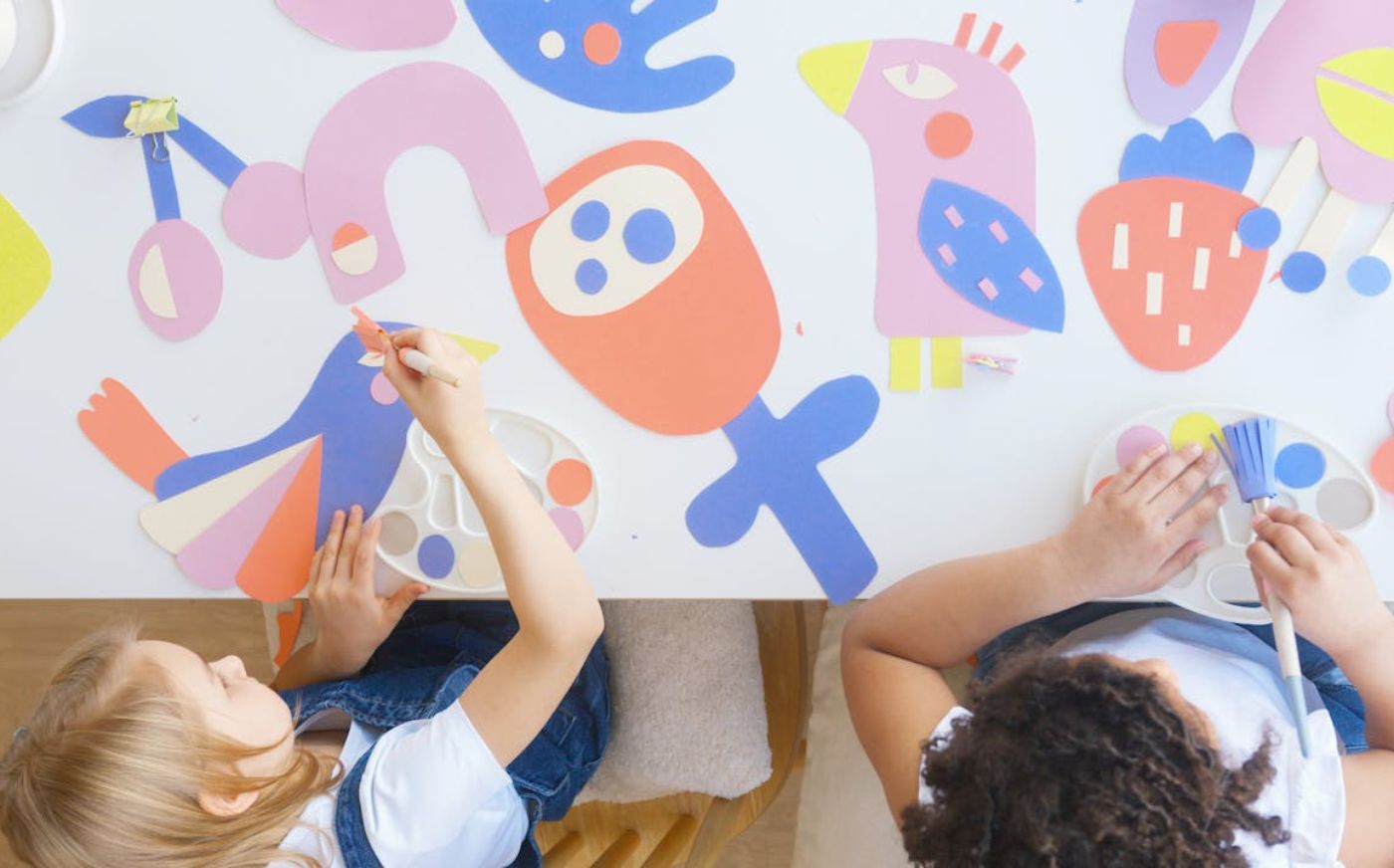
Written by Sarah Bagner
As a parent of young children, the summer holidays can feel rather daunting. An expanse of time opens up, which we, as parents, need to fill with fun-filled activities. I want to offer you five simple activities that don’t require too much planning and mess and can help you bond in a special way with your child and boost their creativity, imagination, confidence, problem-solving skills, and fine motor skills. Hopefully, you’ll enjoy doing them together!
You can do them inside, outside, or even while travelling. 5–10 minutes are required, but they can obviously extend to more, so don’t be disappointed if they take up less time. It’s still a powerful exercise and does make an impact, even if they only focus on it for a few minutes. You can always come back to it after a short break.
Top tip: during the activity, try to comment positively rather than ask too many questions. For example, “Wow, what a strong long line you have made!” rather than “Is that a polar bear?”
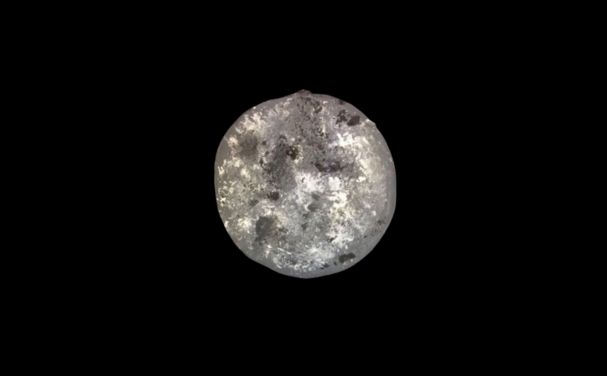
4 tbsp table salt
Small cup of water
Black paper
Paintbrush
Thinking about the moon and space always ignites the imagination and that sense of wonder in a child. It’s a great springboard for you to talk about both big ideas and small details. Children are wonderfully sensitive to the micro and macro of the world.
The sensory experience of water and painting with textures creates a tactile and deeper experience. Holding a paintbrush and the act of painting build up fine motor skills. You can build up your child’s confidence by explaining how it looks great and how the texture is really working.
When it’s finished, make sure to stick it up on the fridge. Let your child overhear you and show it to family and friends so that they feel proud of their achievement.
Mix up the cup of water with the salt, and stir well. You can add more salt for a thicker solution. Start painting the moon with a paintbrush on black paper.
The texture created once dry is a rough, moon-like surface. You can talk about the textures of the moon, which are full of craters and rough, even though when we see it from afar, it looks smooth. You could draw the outline of the round moon, and the child could paint inside with the mixture.
You can also paint with watercolours and add salt if you want to paint other planets, like Mars, in red.

Coloured card cut into shapes – blue, red, yellow, and black
Glue stick
White card
This exercise is a great way for your child to understand shapes and forms in preparation for learning to read and write. Mondrian wanted art to be more like maths, basing a style on geometry.
He only used straight lines and rectangles (reflecting harmony and order), and primary colours (the most basic and pure), along with non-colours of white, black, and grey. The primary colours in this activity speak to a child from a young age and encourage them to create an artistic language of their own.
Let your child experiment with the coloured shapes and get them to stick them down to the white card using the glue stick. You can mention words like ‘symmetry’ and ‘bold primary colours’, and ask your child which pattern makes them feel calm. Be sure to praise along the way and feel free to create more than one final outcome.
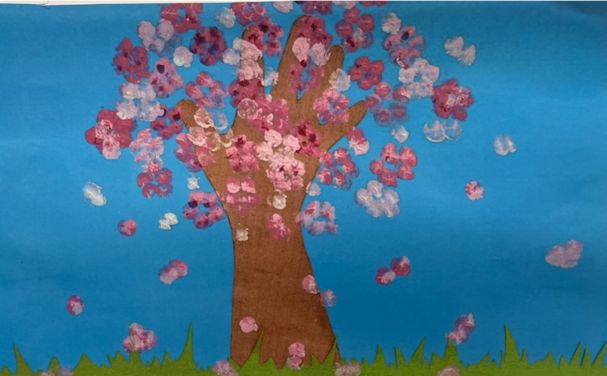
Blue card
Brown card
Green card
Pink and white paint
Cotton buds
Paintbrush
Glue stick
Safety scissors
The focus required is great for expanding a child’s concentration, and using scissors is the first step to holding a pencil and using those fine motor skills. Art is a great way to encourage speech and language, as it’s a special time when you have them focused on something and not jumping around. See if you can make eye contact while your child is painting to remind them that you are there for them and that you’re listening.
Draw around your child’s hand on the brown piece of card. Ask your child to cut around it using the safety scissors, and then stick it on the blue card together using the glue stick. Take a cotton bud or paintbrush and get your child to dab some pink paint blobs on as blossoms. Let them go as much or as little with this exercise, and let him lead the way.
Encourage your child to talk and express any emotions or memories that come to them while doing it. Perhaps you can remind them of a time you saw blossoms together on your way to nursery, and how it made you feel. You could also ask your child about their favourite season.
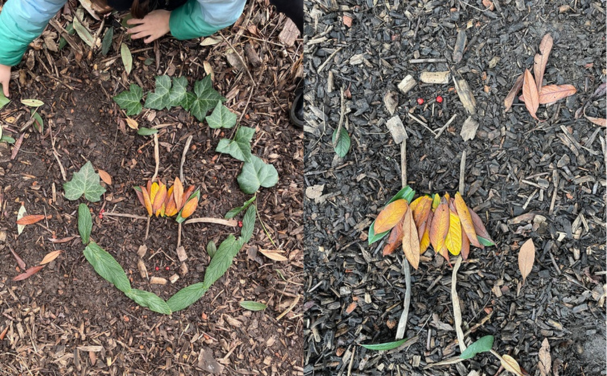
Leaves
Sticks
Stones
A basket or container
This is a brilliant way to get children to start counting while exploring the great outdoors! Educating through play is the most impactful way to learn and this fun activity encourages children to make decisions, problem solve and use their bodies in creative ways to source their materials.
Go for a walk to your local park and ask your child to collect leaves, sticks and twigs, and stones in a bucket. Encourage them to climb a tree to find a leaf, dig a hole to find sticks – offer lots of choices so that they feel in charge and let them make decisions.
Find a grassy clearing and ask them to create numbers and letters out of their collected materials. Say things like “That’s a great idea”, “How can we make that work” and help them where needed. Discuss what they have created and why not take a photo on your phone to then print off for the fridge – art is about creating memories!
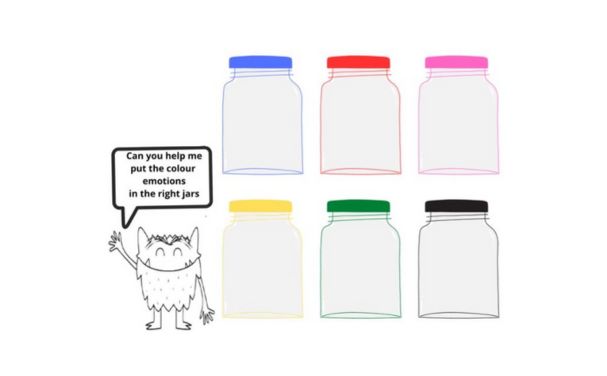
Coloured items such as poms, ribbons, torn-up pieces of coloured paper, buttons etc – separated into colours
5 empty jam jars
This activity is based on the book by Anna Llenas ‘The Colour Monster’. It is a brilliant book for the gentle exploration of feelings in young children, separating emotions and labelling them in order to make them less confusing and scary. Children can identify colours before they can draw facial expressions.
Connecting colours to emotions is a great way to show your child a tool kit for how to deal with emotions and maintain their mental health. Starting early with how to deal with and express emotions is fun and builds emotional intelligence from a young age.
Ask your child to fill the jars with different coloured objects to symbolise different emotions – for example, fill one jar with red items, another with blue items, etc. Alternatively, the jars can be filled up over time.
“Green is calm like the trees”
“Red is anger like lava”
“Yellow is happy like the sun”
“Blue is sadness like the rain”
Encourage your child to talk about their own emotions. Perhaps if you find a green leaf, you can add it to the jar and say, “This green leaf reminds me of how calm I felt when we walked back home together and looked at the trees and the green leaves.” Being mindful of colours and even how the sensation feels in the body is a great way to start a meditative feeling in children.
You can start by asking them, “Where in the body do you feel an emotion – your eyes, your tummy?” The sensation perhaps of tightness or butterflies in the stomach if you’re feeling anxious or excited? And talk with your child about how they can overcome that feeling – perhaps by breathing, taking some space to read or draw, or perhaps by telling someone.
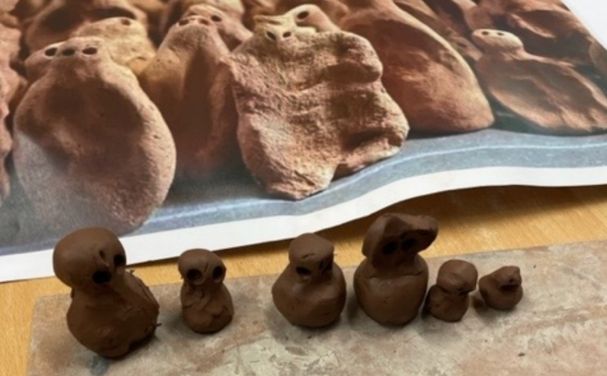
Self-drying eco clay
Sculpture is a very basic and primary urge to create and think of the self. Anthony Gormley is a British sculptor who uses the human form to explore man’s existence in relation to the world. Exposing children to high art is important for expanding their minds and creativity and allowing them to explore who they are through their unselfconsciousness.
Let your child feel the clay in their fingers and explore its texture. Encourage them to pummel and roll it, pound it, and then make it into a round ball. Ask them to stack the balls on top of each other to create minifigures. You can use a pencil to create eye holes and introduce junk modelling to create little worlds for the figures – empty matchboxes for a bed, a cut-up egg carton for a home, etc. Role-play with your child, and encourage them to make up little stories for their figures.
For more content from Sarah, check out: